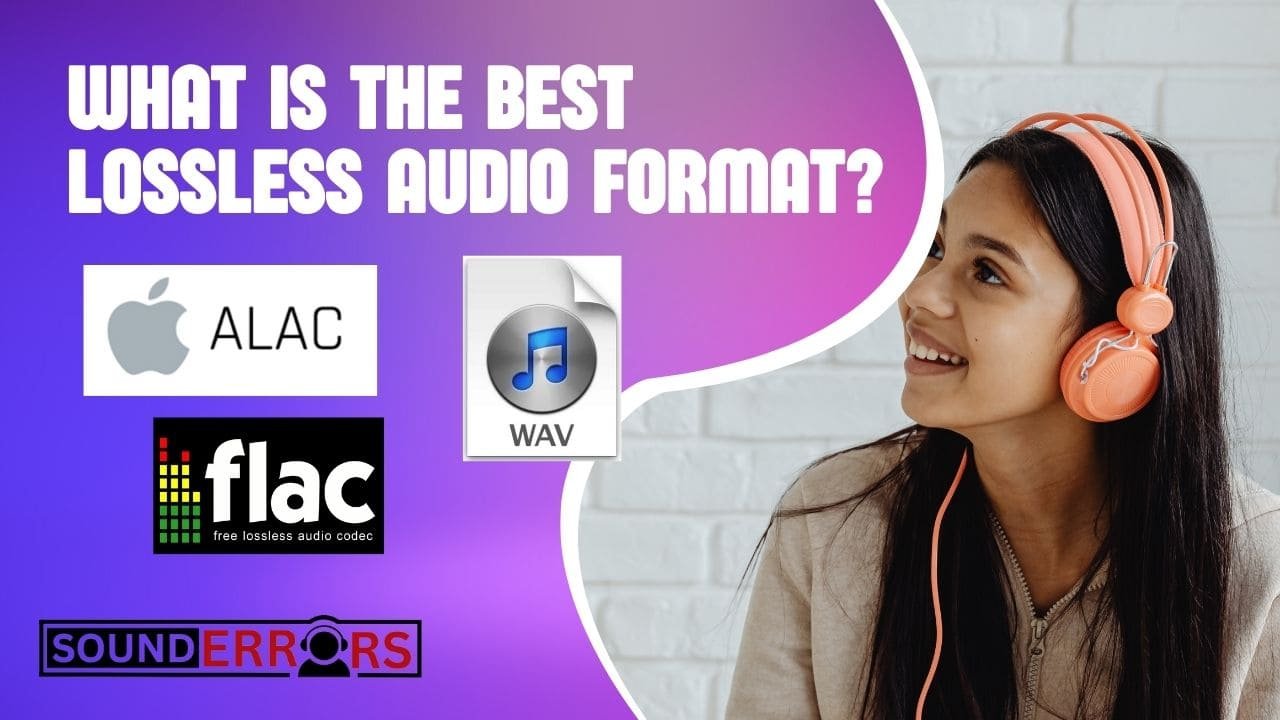This Post may contain affiliate links, when you purchase through links on our site, we may earn an affiliate commission at no extra cost to you. Here’s how it works.
At the core of this quest lies the critical decision of choosing the best lossless audio format, a decision that can make or break the auditory experience.
Table of Contents
ToggleIn this exploration, we unravel the nuances of various lossless audio formats, seeking the holy grail that defines the epitome of sonic fidelity.
If I had to choose just one lossless audio format for most users, it would be FLAC.
Here’s why:
- Compression: FLAC offers efficient compression without losing audio quality, which helps save storage space.
- Compatibility: FLAC is widely supported across various devices, operating systems, and software, making it a versatile choice.
- Quality: It maintains the original audio quality, making it suitable for audiophiles and casual listeners alike.
Delving into the World of Lossless Audio-
Lossless audio compression algorithms, such as FLAC (Free Lossless Audio Codec) and ALAC (Apple Lossless Audio Codec), work by efficiently rearranging the data without discarding any information.

This results in smaller file sizes without compromising the audio signal’s integrity.
Consequently, lossless audio files are ideal for archiving, editing, and mastering high-quality audio content.
Which audio file format is considered lossless?
Several audio file formats are considered lossless, meaning they compress the audio data without losing any information.
This results in an identical copy of the original audio file, preserving the full range of frequencies and dynamics.
Some of the most popular lossless audio formats include:
1. FLAC – The Pioneer of Lossless Compression:
FLAC, or Free Lossless Audio Codec, stands tall as a pioneer in lossless compression.
Renowned for its efficiency in reducing file sizes without compromising audio quality, FLAC has become a stalwart choice for audiophiles.
Its open-source nature ensures widespread compatibility, making it an accessible option across various platforms and devices.
2. ALAC – Apple’s Sonic Signature:
Apple’s lossless audio format, ALAC (Apple Lossless Audio Codec), caters to the vast ecosystem of Apple devices.
With the same promise of retaining pristine audio quality, ALAC competes head-to-head with FLAC.
The decision between the two often concerns personal preferences and the devices one uses, as FLAC might be more compatible with non-Apple hardware and software.
3. WAV – Uncompressed Purity:
While FLAC and ALAC offer lossless compression, WAV (Waveform Audio File Format) embraces a different approach.
It represents an uncompressed audio format, storing every bit of data from the original recording. This purity ensures an unadulterated auditory experience but comes at the cost of larger file sizes.
WAV is a go-to choice for audiophiles seeking the utmost fidelity and who don’t mind sacrificing storage space.
4. DSD – The Audiophile’s Dilemma:
Direct Stream Digital (DSD) is a format that caters to the purists among audiophiles.
It uses a different approach, employing pulse-density modulation for encoding audio signals.
Although praised for its high resolution and minimal processing, DSD faces limited compatibility issues and demands considerable storage space.
It’s a format that appeals to those prioritizing the most accurate representation of sound over convenience.
These lossless audio formats are ideal for preserving the original quality of audio recordings, making them suitable for archiving, audiophile listening, and professional audio production.
Choosing the Right Format
While lossless audio offers superior sound quality but also has larger file sizes.
This can pose storage and bandwidth constraints, mainly when dealing with extensive music collections or high-resolution audio files.
In practical scenarios, a balance between quality and convenience may be necessary.
The choice between FLAC, ALAC, and WAV depends on specific needs and preferences.
For general music listening and storage, FLAC and ALAC are excellent choices due to their balance of quality and file size.
Due to its uncompressed nature, WAV is the preferred format for professional audio production and archiving.
Compatibility and Playback
Most media players and devices support FLAC and ALAC playback. WAV files may require additional codecs or software for playback.
Dedicated audiophile equipment often supports all three formats, ensuring compatibility with various sources.
The Value of Lossless
Lossless audio formats offer a significant advantage over lossy formats like MP3, which discard audio information to achieve smaller file sizes.
This loss of information can lead to audible artifacts, particularly in critical frequency ranges.
On the other hand, lossless formats maintain the original audio quality, ensuring a pristine listening experience.
The Future of Lossless Audio
The pursuit of audio perfection has led to the development of high-resolution audio, which extends beyond the traditional CD standards of 16-bit depth and 44.1 kHz sample rate.
High-resolution audio formats, such as FLAC HD and ALAC Hi-Res, can capture and reproduce audio at higher bit depths (up to 32 bits) and sample rates (up to 384 kHz).
This enhanced resolution promises to deliver an even more immersive and detailed listening experience, revealing subtle nuances and micro-dynamics that may be lost in standard audio formats.
While high-resolution audio is still in its early stages of adoption, it holds immense potential for elevating the quality of digital music and catering to the demands of audiophiles and critical listeners.
Conclusion-
Embarking on a journey for auditory perfection, audiophiles delve into the intricate world of digital audio with unwavering dedication.
At the heart of this quest lies a pivotal decision: what is the best lossless audio format? This choice holds the power to shape and define the entire sonic experience.
As we navigate the diverse landscape of lossless audio, we explore the nuances of various formats, seeking the holy grail that encapsulates the epitome of sonic fidelity.
